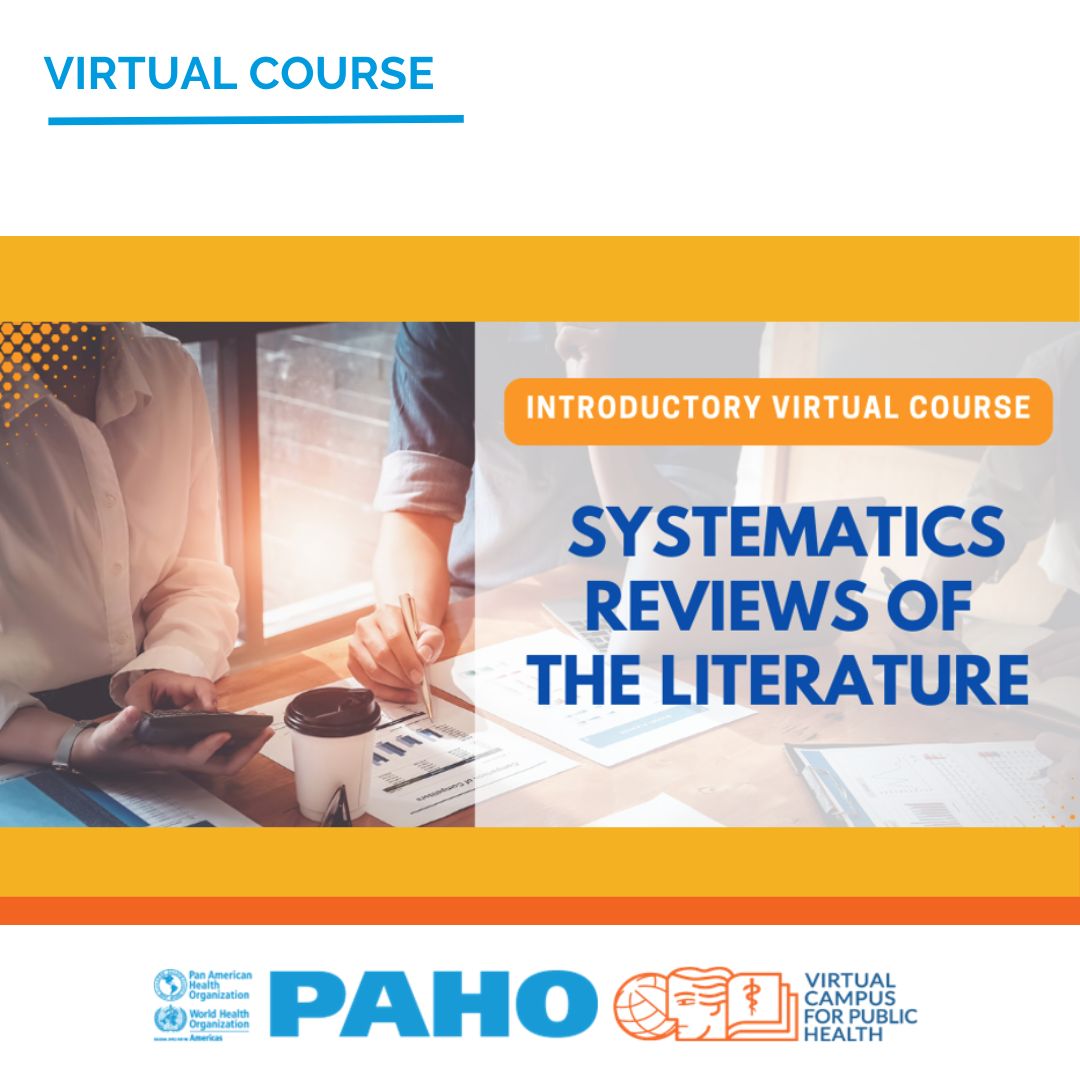Introductory virtual course Systematics Reviews of the literature

Course Program
Introduction to the course
The use of scientific evidence is a key factor in the planning, formulation, implementation, monitoring, and evaluation of health policies and programs. The pandemic caused by SARS-COV-2 highlighted the need to strengthen capacities in the development and interpretation of evidence for health decision-making. Informing these decisions with scientific evidence can improve health systems and service outcomes.
Systematic reviews play an important role in evidence-informed decision-making. They areat the core of all evidence-based products, including guidelines (e.g., GRADE guidelines), health technology assessment (HTA) reports, coverage decisions, and evidence syntheses for policymaking.
This course was developed by the Pan American Health Organization (PAHO) to support the capacity building to strengthen evidence-informed decision-making in the Region.
Course objective
- This course describes the most important concepts involved in conducting a systematic review to answer questions on interventions. .
- Students will be able to apply knowledge about the process and concepts presented, in order to produce a critical analysis of systematic reviews and plan their own systematic review.
Target audiences
- Health professionals interested in using and conducting systematic reviews, agency staff who use systematic reviews to inform their decisions, students in professions related to health care or epidemiology.
- Decision makers and managers at different levels involved in decisions about health policies and programs and their drivers, in both national and local governments; researchers, postgraduate students, and members of civil society organizations interested in the subject.
Competency profile
Course participants will develop introductory skills in:
- Tools and resources that support the use of scientific evidence in decision-making on health policies and health systems.
- Acquisition, evaluation, adequacy, and application of systematic reviews in health decision-making.
- Planning, preparation, and use of systematic reviews to inform discussions on priority public health issues.
Learning approach
The course is structured on remote self-learning. It is based on active methodologies and prioritizes practices aimed at competency building. The contents and working methods are adapted from the Cochrane Handbook for Systematic Reviews of Interventions and other current resources.
Module structure
- Introductory videos on each topic, describing key concepts.
- Supporting texts: further reading (in English and Spanish) to delve into the contents and tools available.
- Exercises aimed at applying what is learned.
Course format
Self-learning course, free, open to the public, and with no time limits for completion.
Course duration
20 hours.
The course is open access. Since it is a self-study course, participants can set their own schedule.
Course structure
Contents:
Module 1: Types of evidence synthesis and introduction to systematic reviews
Module 2: Formulation of PICO questions and selection criteria
Module 3: Search for and selection of articles
Module 4: Data extraction
Module 5: Assessment of risk of bias
Module 6: Synthesis of results: meta-analysis and other analyses
Module 7: Subgroup and sensitivity analysis
Module 8: Assessing the certainty of the evidence
Module 9: Summary tables of findings
Module 10: Interpreting results and formulating conclusions
Evaluation and certification
At the end of the virtual course, participants will have to pass a final exam consisting of 20 multiple-choice questions that assess their knowledge, attitudes, and skills.
The final exam offers participants multiple opportunities to answer correctly until they obtain the necessary score of at least 70%.
Participants who meet the previous requirements and complete the Virtual Campus on Public Health (VCPH) quality survey can download their course completion certificate issued by the Pan American Health Organization.
